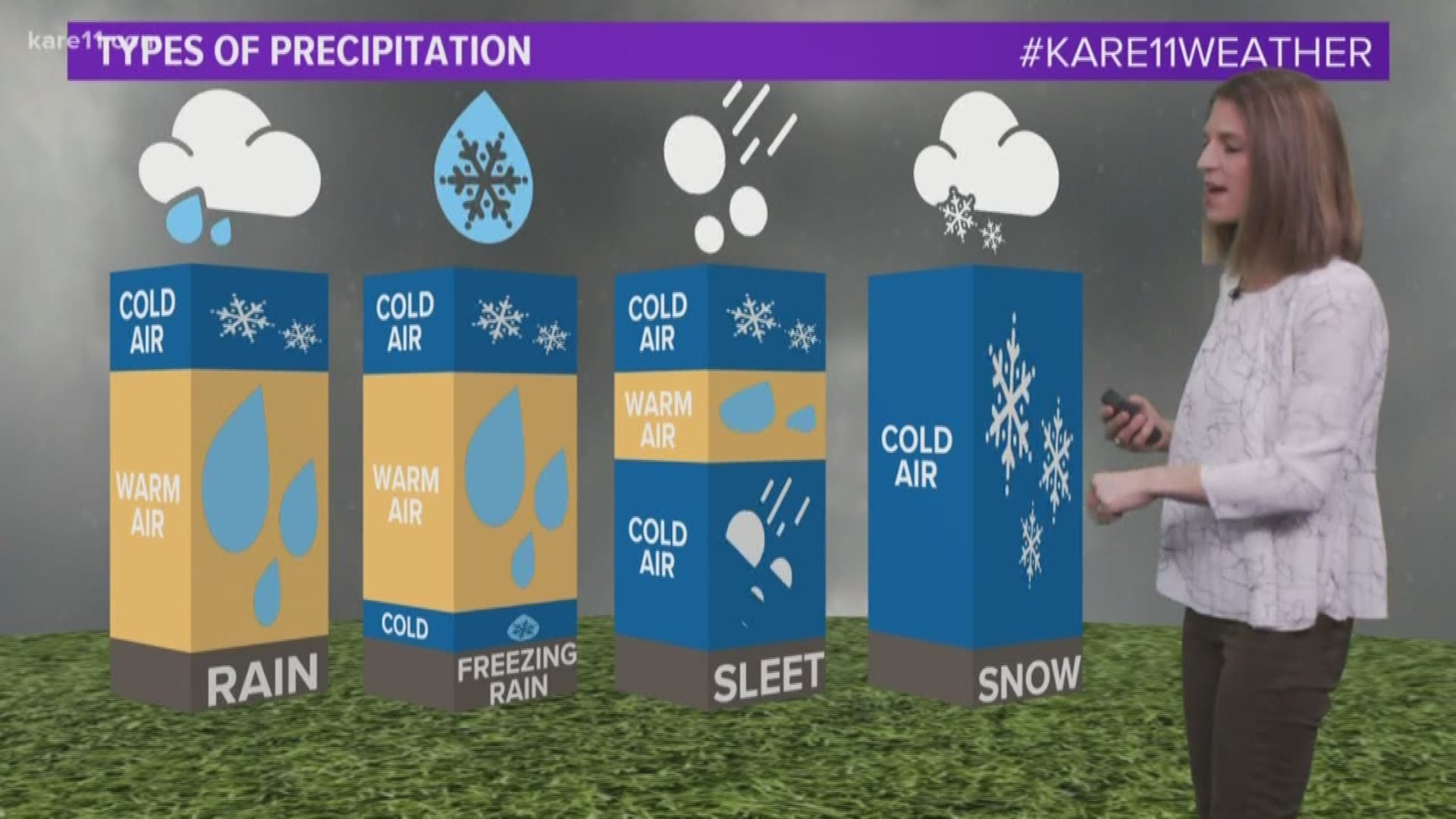It's not just the temperatures at the ground, but what's happening above that determines our precipitation type here at the surface.
In most clouds, even into summertime, the very upper levels of a cloud are frozen. The water way up there is ice crystals.
In order for us to get rain, there has to be enough warm air within and/or below the cloud for those ice crystals to melt into raindrops. Generally that's not a problem in spring and certainly summer.
Freezing rain happens when we have a thin layer of cold air at the surface below 32 degrees. So the raindrops fall as liquid but then freeze on contact with anything at the surface like trees, roads, power lines, etc.
Sleet requires a deeper layer of cold air near the surface... enough so that a falling raindrop has time to freeze solid before reaching the ground. So by the time it reaches us, a pellet of sleet that started out as an ice crystal has melted into a raindrop then frozen into an ice pellet.
And of course snow falls when temperatures from the cloud to the ground are cold enough in order for the crystals, or snowflakes, to stay frozen on their entire journey to earth.
We can get snow when surface temperatures are above freezing if there wasn't enough warm air to allow for that flake to melt. This can happen quite a bit in the spring.
Whatever you see falling from the sky, snap a picture and share it with us. And know that it will melt quickly this weekend and beyond.

